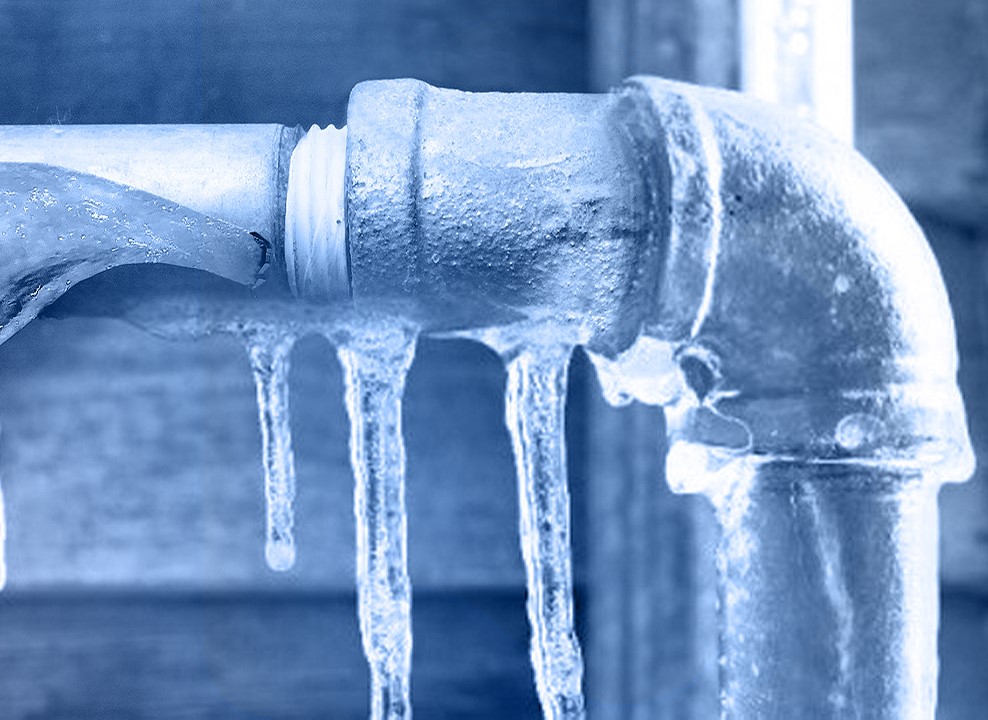Tips to Defend Plumbing System from Freezing: Key Tips
Tips to Defend Plumbing System from Freezing: Key Tips
Blog Article
Listed here underneath you can get additional high-quality details in regards to Helpful Tips to Prevent Frozen Pipes this Winter.

Winter can damage your plumbing, particularly by freezing pipelines. Here's exactly how to avoid it from taking place and what to do if it does.
Intro
As temperatures decline, the risk of icy pipes rises, possibly causing costly repair services and water damage. Recognizing just how to avoid icy pipelines is important for homeowners in chilly environments.
Prevention Tips
Insulating prone pipelines
Cover pipes in insulation sleeves or utilize warm tape to secure them from freezing temperature levels. Concentrate on pipelines in unheated or exterior areas of the home.
Heating techniques
Keep interior areas appropriately heated, especially locations with plumbing. Open closet doors to permit cozy air to distribute around pipelines under sinks.
How to identify icy pipelines
Try to find reduced water circulation from faucets, unusual odors or sounds from pipelines, and noticeable frost on subjected pipes.
Long-Term Solutions
Architectural changes
Think about rerouting pipes away from exterior wall surfaces or unheated locations. Add additional insulation to attic rooms, cellars, and crawl spaces.
Updating insulation
Invest in premium insulation for pipelines, attic rooms, and wall surfaces. Correct insulation aids keep regular temperature levels and lowers the threat of icy pipes.
Safeguarding Exterior Pipes
Yard hose pipes and outdoor taps
Separate and drain pipes garden hoses prior to winter season. Mount frost-proof spigots or cover outside taps with insulated caps.
Understanding Frozen Pipes
What triggers pipelines to ice up?
Pipelines ice up when revealed to temperature levels below 32 ° F (0 ° C) for extended periods. As water inside the pipes freezes, it expands, putting pressure on the pipe walls and possibly creating them to break.
Threats and problems
Icy pipes can result in supply of water interruptions, residential property damage, and costly repair work. Ruptured pipelines can flood homes and cause considerable architectural damages.
Indicators of Frozen Pipes
Identifying icy pipelines early can stop them from bursting.
What to Do If Your Pipes Freeze
Immediate activities to take
If you suspect frozen pipelines, maintain faucets open to alleviate pressure as the ice melts. Use a hairdryer or towels taken in warm water to thaw pipes gradually.
Conclusion
Preventing icy pipelines needs proactive procedures and fast feedbacks. By comprehending the causes, indications, and safety nets, property owners can shield their plumbing throughout winter.
5 Ways to Prevent Frozen Pipes
Drain Outdoor Faucets and Disconnect Hoses
First, close the shut-off valve that controls the flow of water in the pipe to your outdoor faucet. Then, head outside to disconnect and drain your hose and open the outdoor faucet to allow the water to completely drain out of the line. Turn off the faucet when done. Finally, head back to the shut-off valve and drain the remaining water inside the pipe into a bucket or container. Additionally, if you have a home irrigation system, you should consider hiring an expert to clear the system of water each year.
Insulate Pipes
One of the best and most cost-effective methods for preventing frozen water pipes is to wrap your pipes with insulation. This is especially important for areas in your home that aren’t exposed to heat, such as an attic. We suggest using foam sleeves, which can typically be found at your local hardware store.
Keep Heat Running at 65
Your pipes are located inside your walls, and the temperature there is much colder than the rest of the house. To prevent your pipes from freezing, The Insurance Information Institute suggests that you keep your home heated to at least 65 degrees, even when traveling. You may want to invest in smart devices that can keep an eye on the temperature in your home while you’re away.
Leave Water Dripping
Moving water — even a small trickle — can prevent ice from forming inside your pipes. When freezing temps are imminent, start a drip of water from all faucets that serve exposed pipes. Leaving a few faucets running will also help relieve pressure inside the pipes and help prevent a rupture if the water inside freezes.
Open Cupboard Doors
Warm your kitchen and bathroom pipes by opening cupboards and vanities. You should also leave your interior doors ajar to help warm air circulate evenly throughout your home.
:strip_icc()/snow-outdoor-faucet-pipes-4af65d1e5e904fb1aa7bf74071fe5d89.jpg)
Hopefully you enjoyed our part about How to prepare your home plumbing for winter weather. Thanks a ton for spending some time to browse our blog. In case you enjoyed reading our article kindly make sure you remember to pass it around. We cherish your readership.
Order Repair Report this page